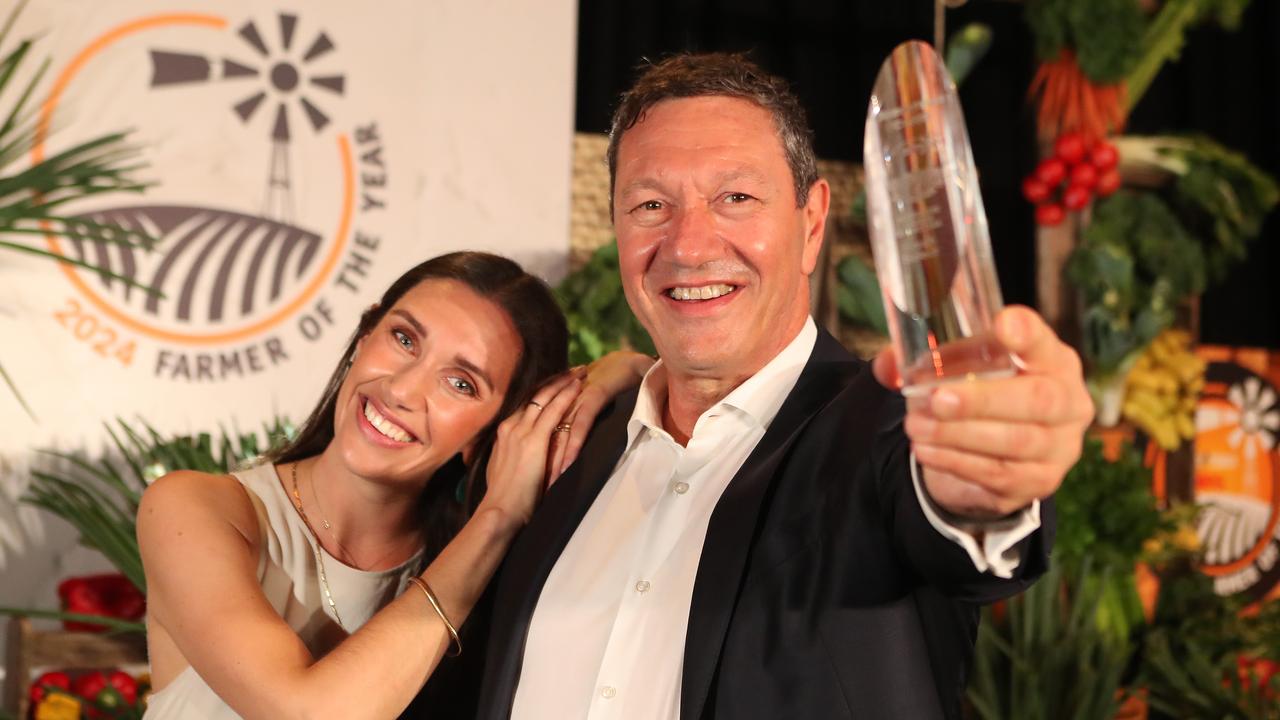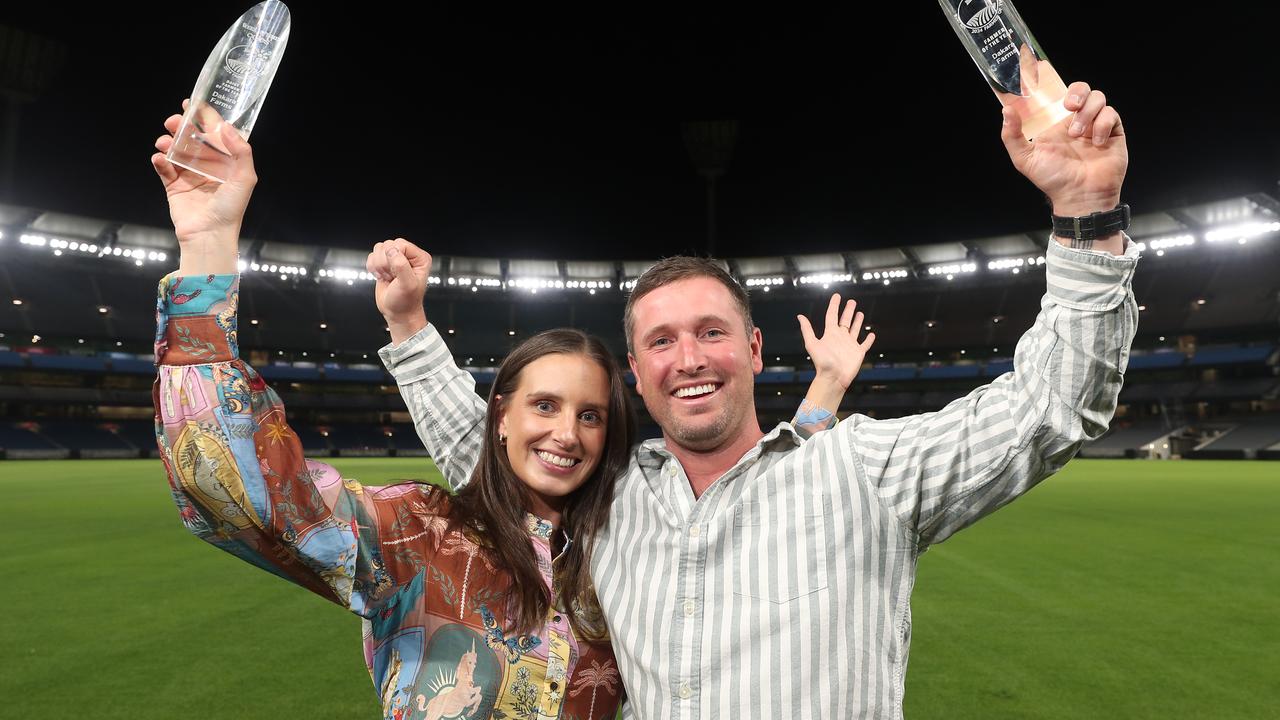Jarrah Cattle Company finetunes genetics for carcass quality
This Queensland couple strayed from northern traditions, to breed cattle that thrive in their climate and earn impressive premiums.
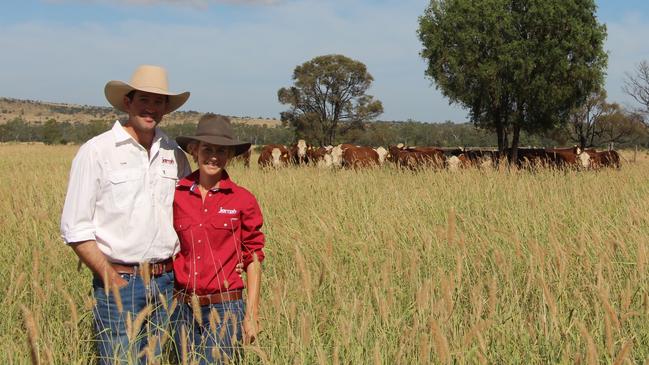
The Weekly Times Coles 2021 Farmer of the Year awards celebrates the best producers from across Australia. If you know a farmer who is doing great things and deserves to be recognised, nominate them here.
Meeting market specifications is what drives one central Queensland beef cattle operation.
Sam and Sarah Becker run a multi-pronged stud and commercial operation with a clear focus — to produce beef cattle that have the highest quality carcass possible.
That task is even more testing in Northern Australia given the additional challenges of tick management and hardiness in the environment.
Their focus has resulted in a commercial herd that is attracting the highest premiums possible for steers and surplus heifers, and three lines of stud cattle where bulls are bred for their own and other commercial operations.
The vertically integrated operation is based on about 11,600 hectares of country at Banana, southwest of Rockhampton, with a herd of about 700 commercial cows as well as stud cattle.
The Beckers’ finishing operation — they turn off up to 1500 steers and heifers a year mostly to feedlots at 400-480kg liveweight — involves their own as well as stock from clients.
It was seeing the premiums for Bos Taurus-infused cattle, and a desire not to be penalised for a high Bos-Indicus content in steers, that led the couple to create two stabilised composite bull breeding enterprises. They saw a path forward in improving carcass quality by introducing what’s known in the north as “flat back cattle”: Bos Taurus breeds such as Herefords into Bos Indicus-dominated herds.
The Beckers realised early that Herefords could offer something to northern cattle producers, but the type of Hereford they needed to breed would have to be carefully chosen to suit the environment.
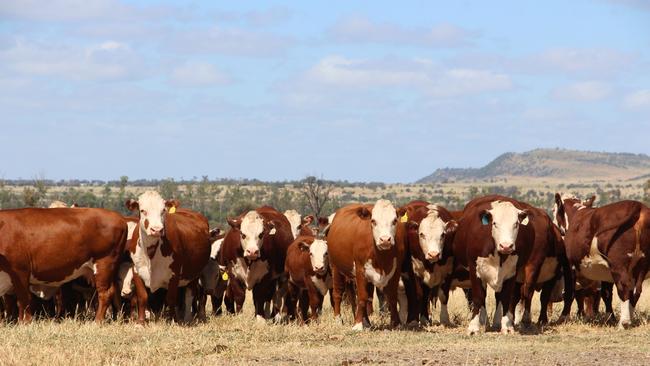
BATCH OF FINE REDS
The Jarrah stud was created in 1978 and the Beckers continue to invest heavily to get the type of genetics they want to fit into their own commercial program as well as their clients. “There is the extra dimension we have to consider and that’s skin type as we just can’t have the coarser hair type because of tick issues,” Sam says.
Recently they bought a share in a $160,000 bull from the Injemira stud near Wagga Wagga, which they said had curve-bending estimated breeding values and a phenotype to match.
Yet it’s their other lines of composite cattle — Jarrah Reds and Redfords — that are attracting just as much attention. The Jarrah Redfords draw on the strong Hereford genetic base the Beckers had already established and are 25 per cent Hereford and 75 per cent red Brahman. The Jarrah Reds — a mix of Redfords and Santa Gertrudis — result in cattle that are 44-47 per cent Bos Taurus.
While it may sound complicated, the Beckers say the three lines of stud cattle are designed to breed bulls that keep the key characteristics of cattle to suit the climate but also maximise carcass returns. Regardless of the breeding combination they use, Sam says the cattle have key commercial features that are non-negotiables — structural correctness, fertility, and growth.
Fertility is a key to profitability, Sam says, and ensuring females have a calf every year is vital.
LAND OF FORTUNE
A calf on the ground out of every female every year is one thing, but Sam says those calves also need to perform in terms of growth and then as carcasses.
It’s a philosophy that has driven the Beckers’ breeding decisions, with a desire to have genetics that will allow them to maximise income from land area.
“Everyone is trying to do exactly that — with land prices increasing so dramatically, they have to maximise the return per land area,” Sam says. “If you have beef genetics that have high growth, that allows you to turn off cattle more quickly. To have genetics that improve the quality of carcass and earn you more, that is where the profitability is maximised.”
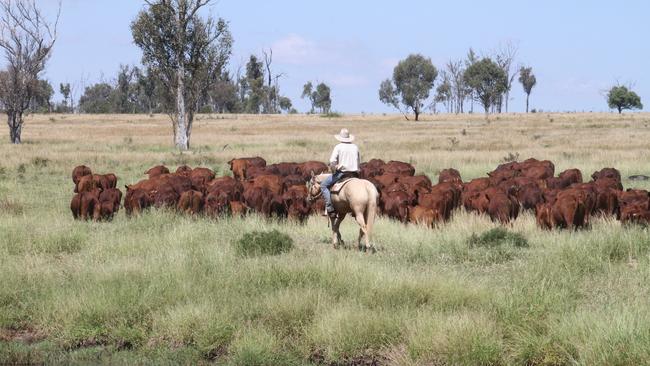
The Beckers not only talk the talk, but walk the walk, as they see the result of their genetic decisions play out in their own progeny and those they buy in from clients.
The seasons in their region see the best feed from the end of October, when the rain break comes, until the end of April, and weight gains in these grass-fed steers and heifers will peak at about 1kg per head per day.
EFFORT SEES REWARD
If the conditions are right and the Beckers get a lucky break, fodder crops can push that winter growth rate up, but that’s not always possible and dependent largely on out of season rain.
Most of their steers are turned off at an average of 430kg at about 18-20 months and mostly into the feedlot trade which is hungry for high-performing cattle.
While the Beckers welcome the interest for their flat back-infused cattle, it’s also frustrating that they don’t see the carcass data and get feedback on how those cattle perform when they come out of the feedlot and on to the kill floor.
Sam also wants to see some of that commercial data feed back into estimated breeding values for bulls, improving accuracy.
What they are seeing though is that effort equals reward, and the time and care they have taken in choosing genetic lines to boost their own and their clients’ herds is paying off. “We can definitely see the results of the money we have spent on genetics in the quality of cattle we are producing,” Sam says.
MORE

